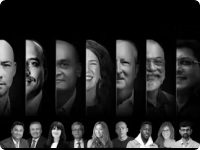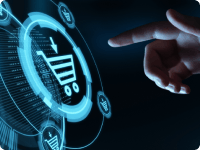Landing Page
A landing page is a standalone web page that is created specifically to move a marketing or advertising campaign forward. It’s the primary page for visitors who come in from clicking an ad on a search engine site, or a focused email or social media channel.
Landing pages are designed with a single focus or objective also known as a call to action or CTA that helps drive conversion. Landing pages are ideal for increasing conversion rates of marketing campaigns and reducing lead acquisition costs.
The biggest difference between a landing page and a conventional web page is that web pages are geared towards exploration and have multiple goals
There are two kinds of landing pages that marketers typically use depending on the end goal.
- Lead-generation pages use a form to collect lead data, like names, email, contact information etc. These pages typically are used to build a list of potential customers, or customers interested in an offer or deal. Lead-generation pages typically have a carrot—an enticement, like an ebook or free downloadable resource that they offer in exchange for information about the customer.
- Click-through landing pages are typically used for the purpose of directing visitors to complete a transaction via a call to action button. These pages are built for the purpose of completing sales or subscription.
There are four primary ways to drive traffic to landing pages
Paid Search Traffic
Paid advertising across search engines is one of the more reliable methods to direct traffic to landing pages. When a user searches for something, paid ads are the ones that appear in the first few search results and are marked as ads. Paid ads are typically prepared, and paid for by the marketing team in the company.
The content on the ad is optimized for maximum attention and is designed to attract a particular demographic, or interest group based on criteria that are determined by the marketing group according to the personas they wish to target.
Paid traffic ads, in this case, would lead the users to the landing page that would direct them to take requisite action.
Paid Social Traffic
Paid traffic that comes from social media is also a good way to bring in people by targeting specific communities, or regions where interest for the brand will be high. Social media has its limitations in that every channel caters to a specific audience and knowledge of the audience is critical to ensure success. Everything from copy, to design needs to be optimized for the channel it is designed for.
Email Campaigns
Email is one of the most effective marketing channels because of its reach and lowers costs when compared to other platforms. Emails married to landing pages is ideal for both acquisition and nurturing customers. Emails sent to a curated list of potential customers with content that elicits curiosity is a proven way to direct traffic to a landing page with a clear call to action button.
Organic Search Traffic
Users coming in from an unpaid source are referred to as organic search traffic. Organic traffic depends a lot on the creation of compelling, useful content on the landing page. The higher the content ranks on the page, the better the chances of it being discovered.



